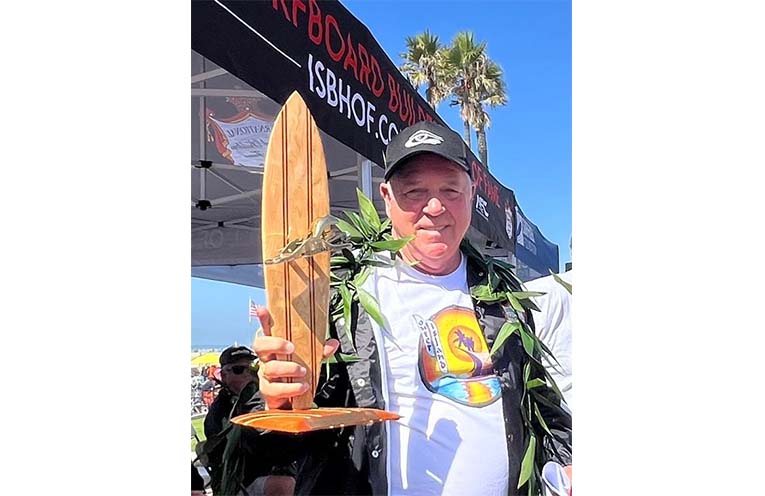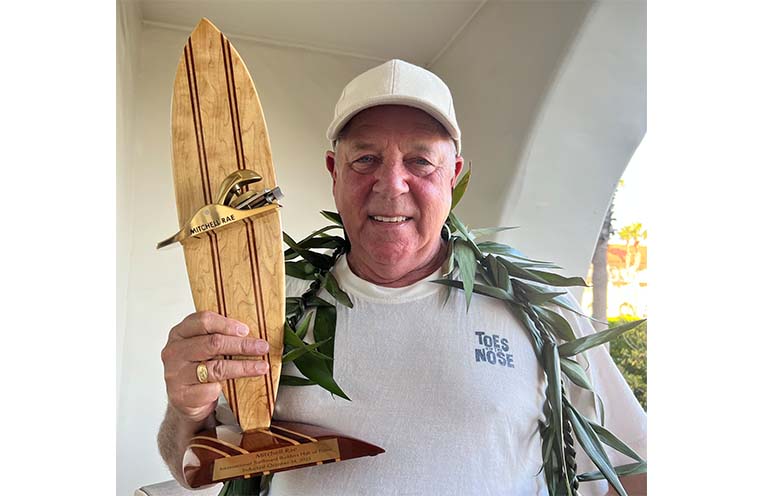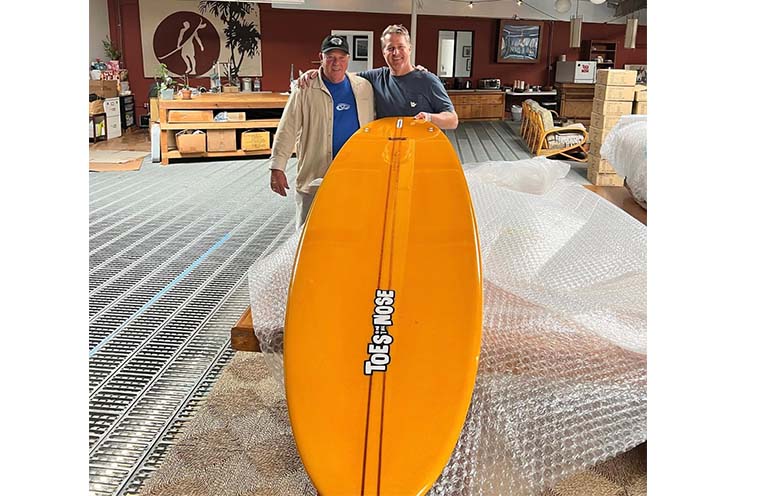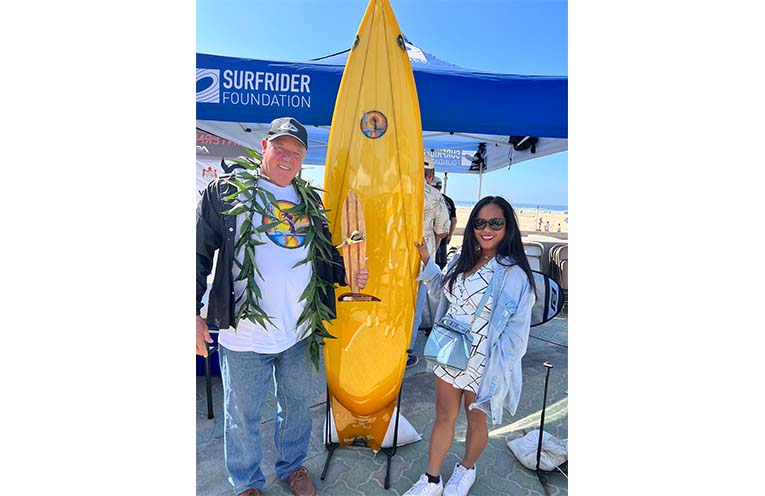
IN RECOGNITION of a lifetime’s work crafting surfboards, Mid North Coast surfboard builder Mitchell Rae, founder and owner of Outer Island Surfboards, officially accepted his induction into the Surfboard Builders Hall of Fame in California on Saturday 14 October.
He refers to the U.S. trip as a pilgrimage to his “surfing Mecca”.
“A journey to pay tribute to those who paved the way for my career and lifestyle,” Mitchell, who operated from Scotts Head for four years, told News Of The Area.
Standing in front of an array of surfing greats while delivering his acceptance speech, Mitchell said, “I have to say I’m experiencing Surf City sensory overload here in Huntington Beach, my first time in California.
“You’ve got a lot going on here in contrast to where I live and work on the East Coast of Australia.
“I really do have kangaroos that hop down my street.”
The road to Mitchell gaining this international accolade has been quite a journey.
“To have my work recognised, experiencing Californian hospitality, their surf culture and the size of the surf industry here has been an eye opener.
“In hindsight though, beside surfing itself, what’s been most enjoyable for me about shaping custom surfboards is the satisfaction I get from the process of sitting down with a surfer that wants a board from me, listening and exchanging ideas, writing up the custom order form and then I get to translate that conversation into foam and fiberglass.
“If it’s a young surfer’s first custom board or a guy that I’ve been making boards for for decades, inevitably when they come to pick up their new board I get to see the big smiles.
“I get so many high energy stoked phone calls and emails when they’ve had a surf on their new board and that’s enormously gratifying.”
Mitchell started surfing in 1963 at Dee Why on Sydney’s Northern Beaches, the “epicentre for Australian surfing in the early 60s”.
Just over the hill, in Brookvale, was the centre for the surfboard industry in Australia, with Barry Bennett, Bill Wallace and Gordon Woods all having their factories there.
Mitchell built his first board when he was aged twelve.
“I rode that board in the first Australian schoolboys’ competition, making it into the finals with Mark Richards.
“Back then, around ‘67 the only way for me to make a living from surfing was making boards.”
His first job was as a sander at Peter Clarke Surfboards in Brookvale.
“After a year of sanding, I got a gig as a shaper.
“Not long after, with two friends we started Outer Island.
“Midget Farrelly was moving his factory to Brookvale, so we stepped straight into his old factory in a boatshed at Palm Beach.
“As the factory grom, I glued blanks, glassed, sanded, polished, made fins and got to shape a few boards and we experimented with super deep concave bottoms.”
In ’72, Mitchell’s visit to Bali ignited a lifelong affair with the Indonesian island’s waves.
“The reefs, steep take offs, perfect barrels and that mystical island culture has had an influence on my life and shapes ever since.”
On that first trip to Bali, he noticed the local fishing boats had eyes painted on the bow.
The fishermen believed that having eyes on their boats brought the boat to life and aided their safe return.
“I thought that was cool and the ‘Spirit Eyes’, as I call them, have become synonymous with Outer Island surfboards.”
Mitchell suggests that his biggest contribution to surfboard design is the 30-odd years he’s dedicated to the development of variable curve and controlled flex.
“I was fortunate to surf with George Greenough at Lennox Head in the winter of ‘69 and saw how his spoon Velo would flex, carve incredibly tight arcs and generate speed out of turns and I’ve been on a quest to incorporate flex into my boards ever since.
“My original flex tail designs used a blade-like, flexible fibreglass tail section, inspired by George.
“With the advent of flexible foams and carbon fibre I was able to evolve my flex designs by allowing me to replace the buoyancy of the sculpted out tail section, necessary to achieve the flex and to restore the foil and volume of the original tail profile with PE foam.”
One of his passions is crafting balsa boards of which he builds a small number of classic chambered mals and guns each year.
“I’d like to think I’ve contributed in a small way to the evolution of modern surfboard design and surfing.”
By Andrea FERRARI



